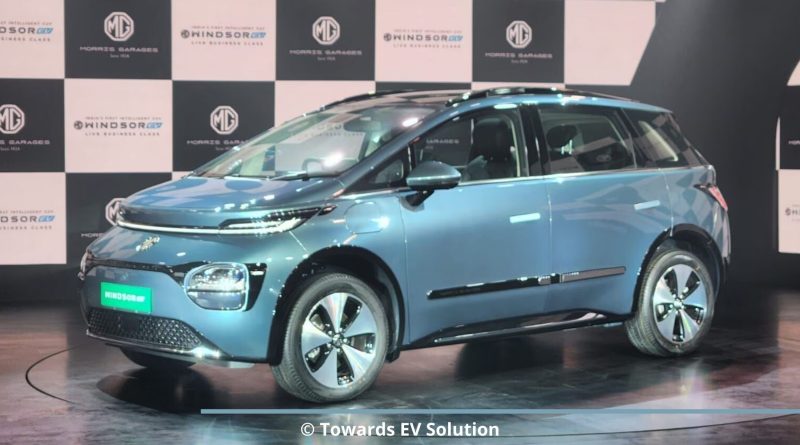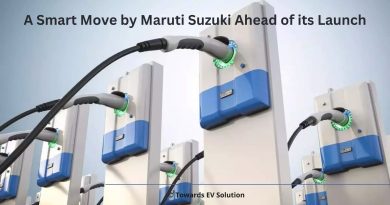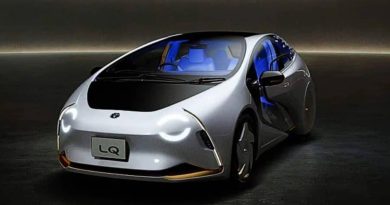MG Windsor Launched the Battery Rental Scheme Fueling the Expansion of the Electric Vehicle Battery Market
The new advanced EV of MG Windsor is priced at 9.99 lakhs excluding the cost of the battery pack and was introduced in India after the MG ZS EV and MG Comet EV. The name of MG Windsor’s unique battery rental ownership scheme is BaaS or Battery-as-a-Service. This newly launched electric vehicle is less expensive than the Tata Nexon EV which is priced at 12.49 lakh to 16.49 lakh.
Electric Vehicle Battery Market Size
According to Precedence Research’s Report on “Electric Vehicle Battery Market”, the global electric vehicle battery market size reached USD 63.51 billion in 2023 and is predicted to grow around USD 573.08 billion by 2033, with a remarkable growth at USD billion in 2024 expanding at a CAGR of 25.1% from 2024 to 2033.
In 2023, the electric vehicle battery market of China was valued at USD 7.25 billion and it is projected to reach a CAGR of 26% from 2024-2033. In 2023, Asia Pacific held the largest market share of 40.19%, and the market size was valued at 18.26 billion respectively. due to the leading industrial players in the region such as Hitachi Ltd, Panasonic Energy Co. Ltd, Duracell, TCL Corporation, etc. In September 2023, Samsung SDI, one of the leading battery producers, announced its invested amount of $1.98 billion in its second battery factory in collaboration with Stellantis.
In 2023, the electric vehicle battery market of Japan was valued at USD 5.11 billion and it is projected to reach a CAGR of 25.5% from 2024-2033. In August 2023, a Chinese manufacturer produced a ‘Superfast Charging Battery’ capable of offering a 400 km driving range. North America and Europe are expected to be the fastest-growing regions in the coming years due to the increased demand for sustainable products and the strict government regulations.
Chinese EV battery manufacturers attracted investments of approximately $21 billion in 2022, aimed at expanding production capabilities and raw material procurement. The Indian government announced investments of about $4 billion in 2023 to boost battery manufacturing capabilities, including the establishment of Giga factories in states like Gujarat and Karnataka.
| Dimensions | MG Windsor EV | Tata Nexon EV |
| Length | 4,295 mm | 3,994 mm |
| Width | 1,850 mm | 1,811 mm |
| Height | 1,677 mm | 1,616 mm |
| Wheelbase | 2,700 mm | 2,498 mm |
| Boot Space | Upto 604 litres | 350 litres |
In 2022, South Korea produced around 140 GWh of EV batteries, marking a growth of 23% from the previous year. Exports of EV batteries from South Korea amounted to $10 billion in 2022, with projections reaching $12 billion in 2023. The electric vehicle battery market in China, India, and South Korea is on an upward trajectory, driven by technological advancements, government initiatives, and increasing investments. As these markets continue to evolve, they are likely to play a pivotal role in shaping the global EV landscape.
Electric Vehicle Market Size
The global electric vehicle market size was USD 255.54 billion in 2023 and is predicted to grow from USD 317.26 billion in 2024 to USD 2,108.80 billion by 2033. the market is projected to grow at a double-digit CAGR of 23.42% from 2024 to 2033. Electric vehicle sales have increased from 67,68,000 in 2021 to 1,05,22,000 in 2022.
The Asia Pacific electric vehicle market size is calculated at USD 134.11 billion in 2024 and is projected to surpass around USD 917.33 billion by 2033. The sector is representing a remarkable CAGR of 23.82% during the forecast period from 2024 to 2033.
Read Also: Building Charging Stations: A Smart Move by Maruti Suzuki Ahead of its Launch
With a Master of Science in Statistics and over two years of expertise in the market research industry, Rushikesh brings a wealth of knowledge to the world of electric vehicle (EV) news. His passion for the automotive sector, combined with his statistical expertise, allows him to analyze trends, consumer behavior, and emerging technologies with precision. Rushikesh’s ability to dive deep into the numbers, yet communicate them in a reader-friendly manner, makes him a key voice in the fast-evolving EV industry.
Having spent his academic and professional career immersed in data-driven analysis, Rushikesh leverages his strong statistical foundation to offer insights that are both thorough and forward-thinking. His keen interest in the automotive industry, especially electric vehicles, positions him uniquely to understand not only the current landscape but also the trajectory of the sector as governments, manufacturers, and consumers increasingly lean towards sustainable transportation.




